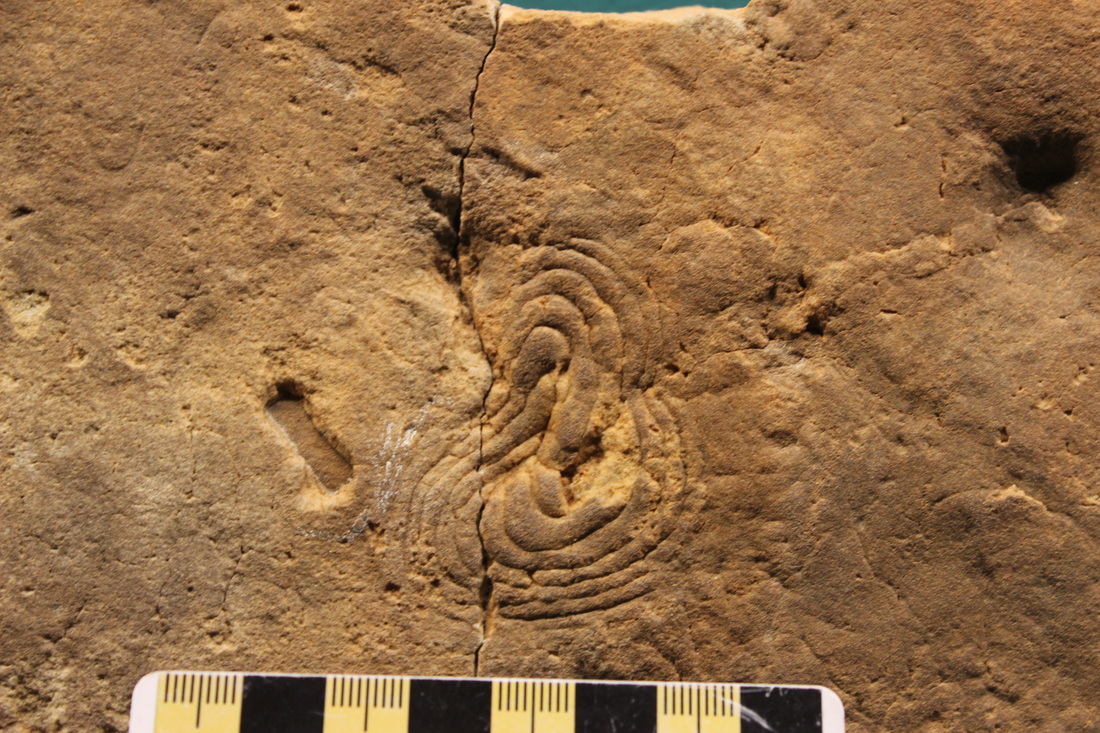Eoandromeda octobrachiata
zhu et al., 2008
|
The fossil Eoandromeda is named after its resemblance to a spiraling galaxy, notably the Andromeda nebula. Loosely described to be a dome-shaped benthic (bottom-dwelling) organism, Eoandromeda is characterised by eight "arms" spiralling outwards from a small central boss. It is uncertain as to whether the fossil has eight-fold symmetry (octo-radial) or two-fold symmetry (bilateral).
It has been compared to modern ctenophores, most of which are pelagic (i.e. free-swimming) rather than living on the seafloor. However, ctenophores are the only modern animals to possess eight-fold radial symmetry. It remains to be seen whether further study will confirm this proposed relationship. |
Described from:
Flinders Ranges, South Australia South China Key references: Tang et al., 2008 Zhu et al., 2008 |
Diagnosis (from Tang et al., 2008):
Soft-bodied, disk-shaped, circular in the outline (up to 2.64 cm across), with eight spiral arms (ca. 2 mm wide) radiating from the central part.
Soft-bodied, disk-shaped, circular in the outline (up to 2.64 cm across), with eight spiral arms (ca. 2 mm wide) radiating from the central part.

